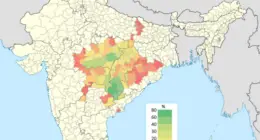“Path” typically refers to a defined route or trail, while “way” is a broader term encompassing various routes, methods, or directions.
TL;DR Path Vs. Way – Key differences
A path refers to a physical route or track that is typically created for walking or traveling from one point to another. It can be a natural trail through the woods or a man-made pathway in a park. Paths often have defined boundaries and are usually designed with practicality in mind.
A way is more abstract and versatile. It can refer to various methods, means, or routes of achieving something. A way can encompass different approaches, strategies, or techniques used to accomplish a goal. It is not limited to physical paths but can also represent figurative journeys or processes.
What is a Path?

A path is a designated route or trail, often designed or naturally formed, providing a way for walking, cycling, or moving from one place to another.
Paths can be found in natural landscapes, parks, or urban areas, offering guidance and direction. They vary in width and may be paved or unpaved, serving practical, recreational, or aesthetic purposes.
Paths are essential for navigation, outdoor activities, and connecting people with their surroundings, fostering a sense of direction and exploration in both natural and man-made environments.
What is a Way?
A way refers to a course or route that facilitates movement or progression from one point to another.
It is a broader term encompassing various paths, roads, methods, or means of reaching a destination. Ways can be physical, like roads or trails, or abstract, representing approaches, manners, or processes.
The term extends beyond literal routes to include figurative or symbolic directions. “Way” often denotes a journey, method, or course of action, emphasizing the diverse avenues available for achieving objectives or navigating through life. It’s a versatile term that encapsulates both tangible and abstract aspects of movement and progression.
Path Vs. Way – Key differences
| Characteristic | Path | Way |
|---|---|---|
| Definition | Designated route or trail. | Broader term, includes various routes or methods. |
| Nature | Can be physical or metaphorical. | Encompasses both literal and abstract concepts. |
| Purpose | Often designed for walking or movement. | Represents a course, method, or direction. |
| Specificity | More specific, referring to a defined route. | More general, indicating different approaches. |
| Usage | Commonly used in outdoor and navigational contexts. | Used in various contexts, including abstract ideas. |
| Examples | Hiking path, bike path, garden path. | Career path, pathway to success, way of doing things. |
Examples of how each term is used in different contexts
Path Examples:
- Outdoor Navigation: “We followed the winding path through the forest to reach the summit.”
- Gardening: “The landscaper created a beautiful path through the garden using stones and flowers.”
- Technology: “Ensure the installation path is correct before proceeding with the software setup.”
Way Examples:
- Career Development: “She paved her own way to success through hard work and dedication.”
- Direction or Method: “There’s more than one way to solve this problem; let’s explore different approaches.”
- Street: “The highway is the quickest way to reach the city from here.”
These examples highlight how “path” is often associated with physical routes, while “way” is more versatile, encompassing both physical and abstract contexts.
Image Credits
Featured Image By – Radosław Cieśla from Pixabay
Image 1 By – Sven Lachmann from Pixabay








